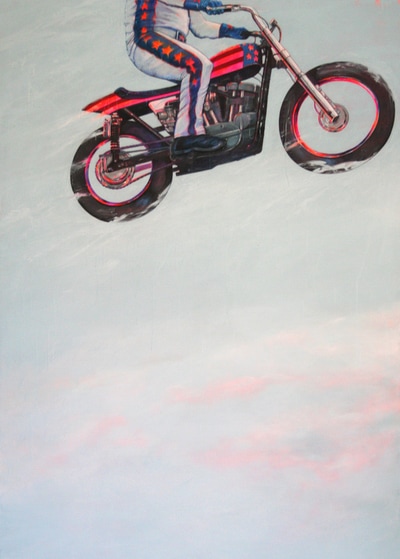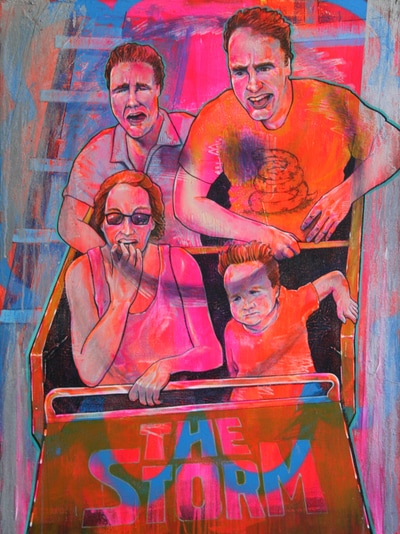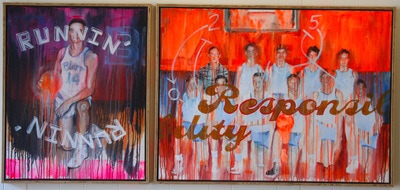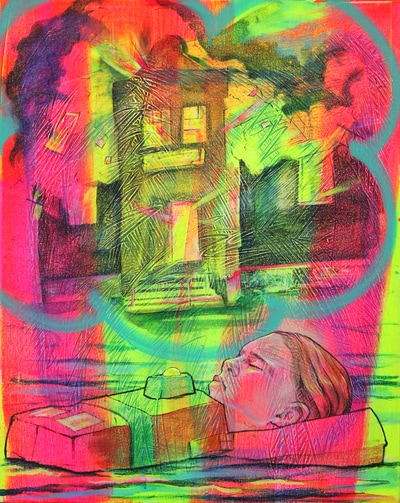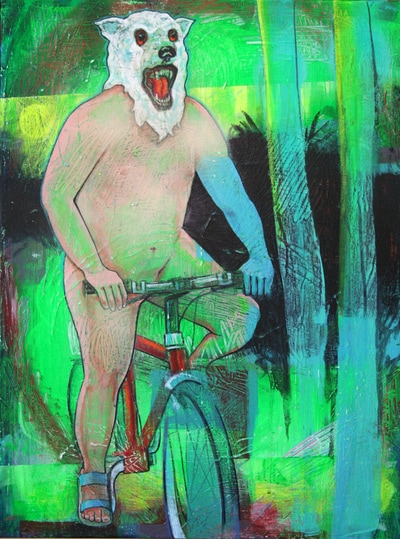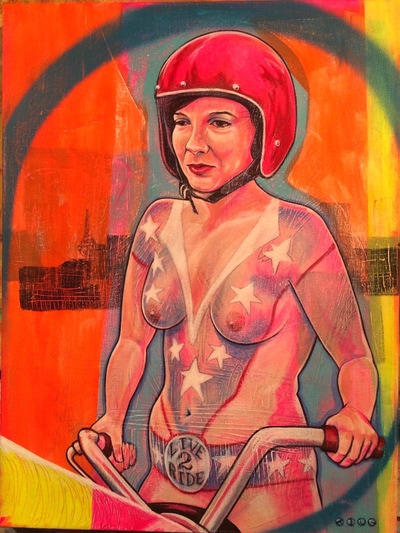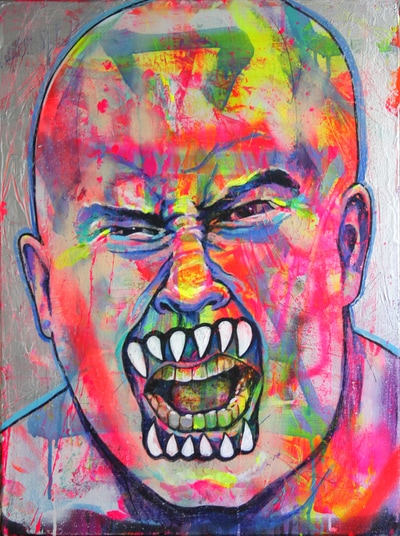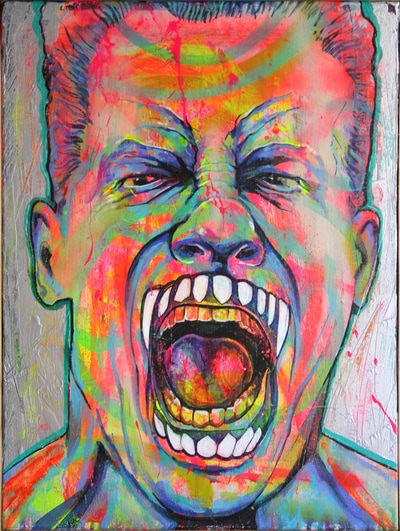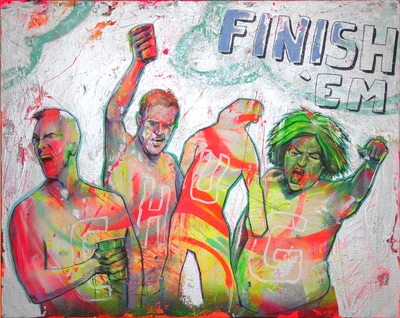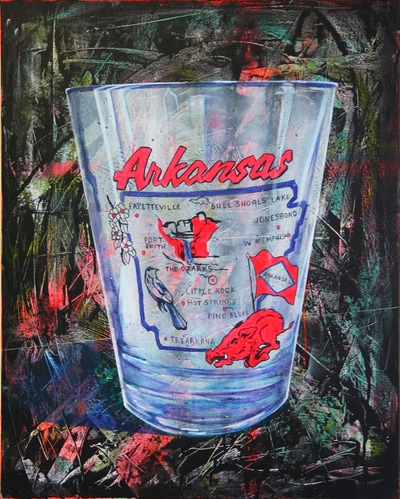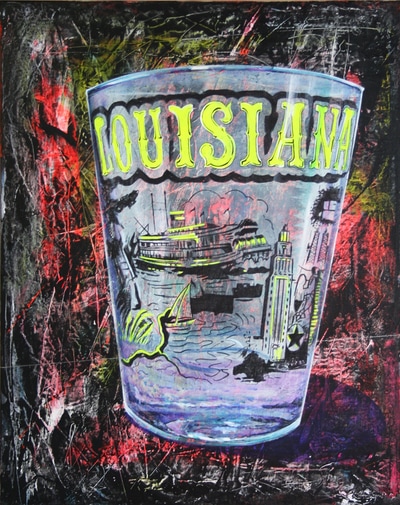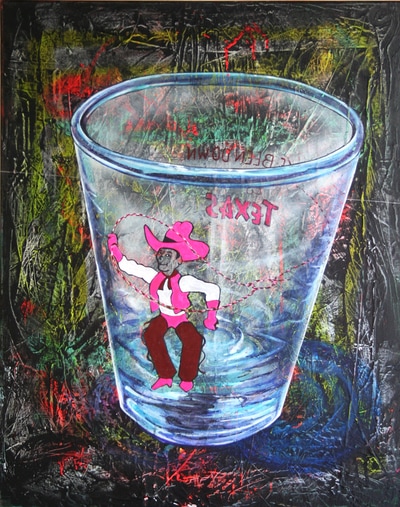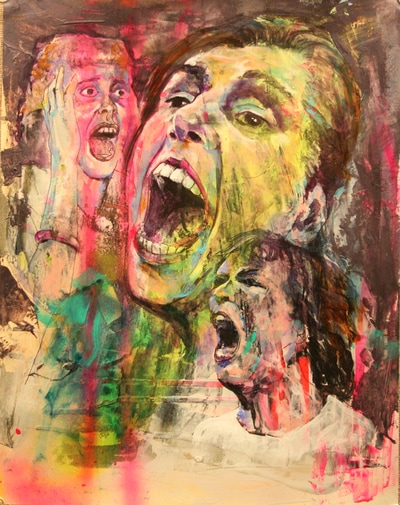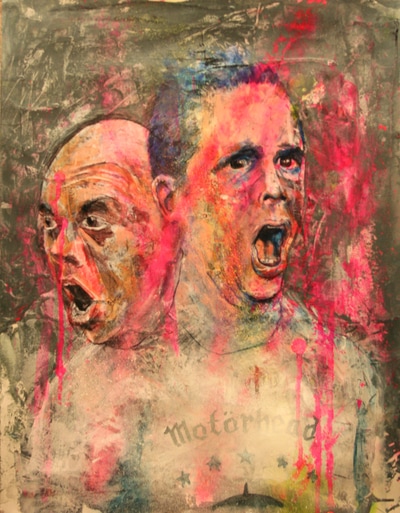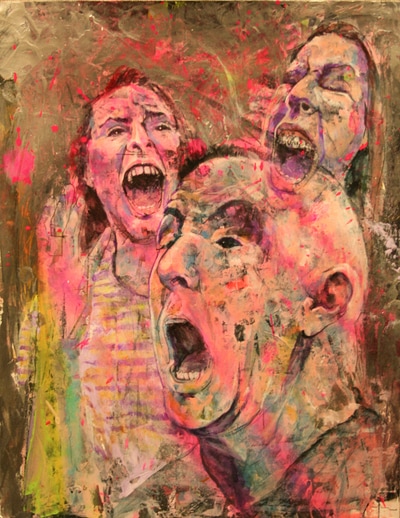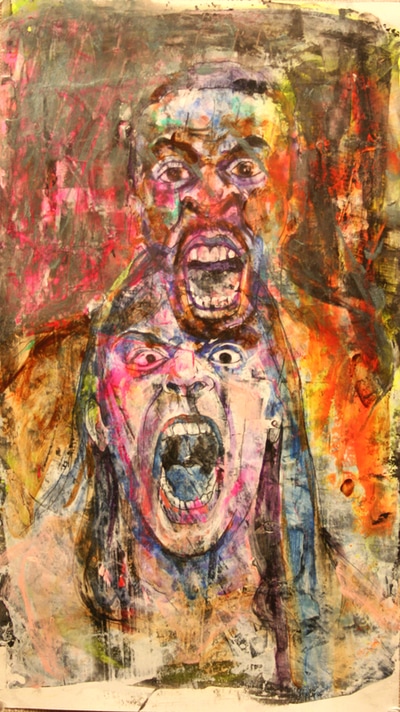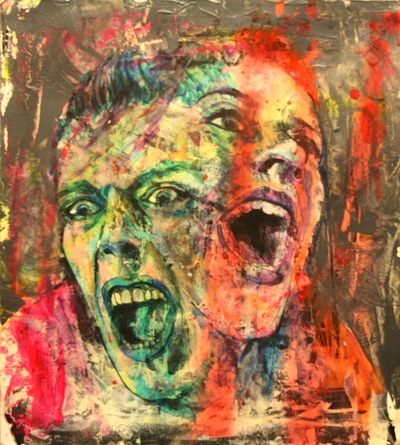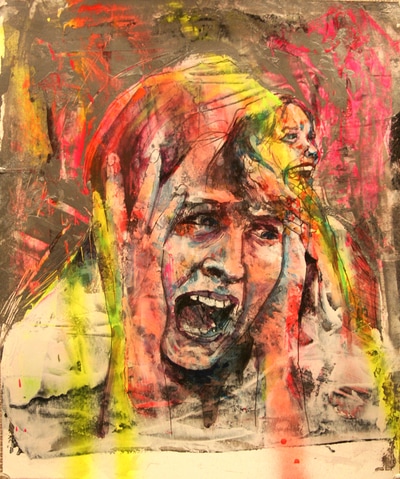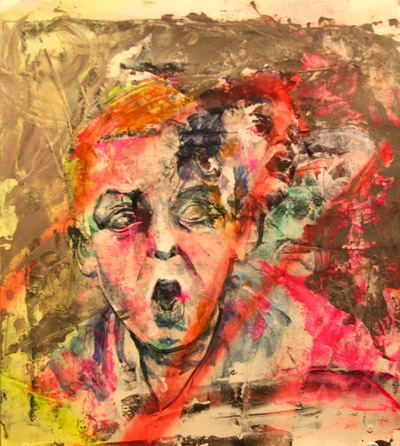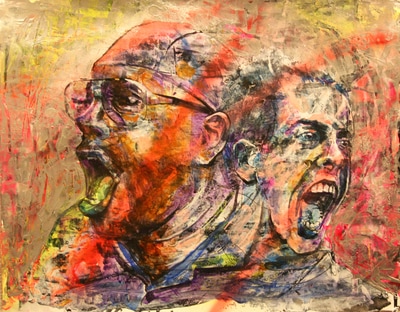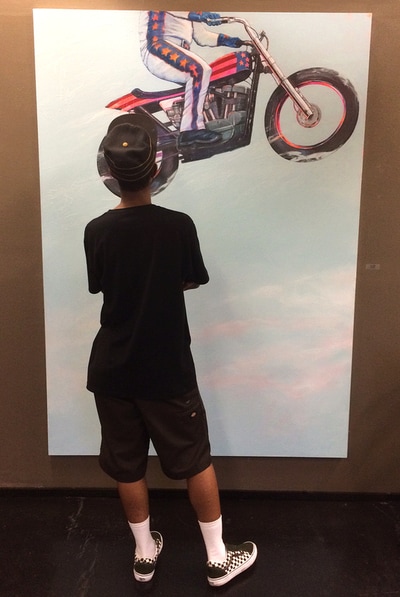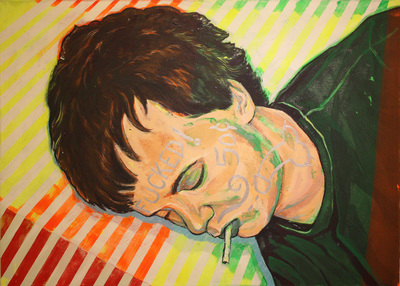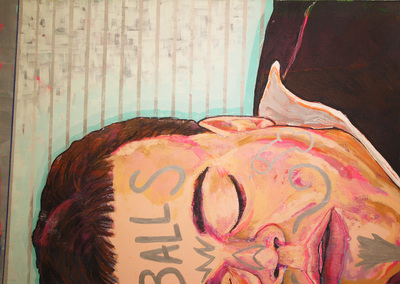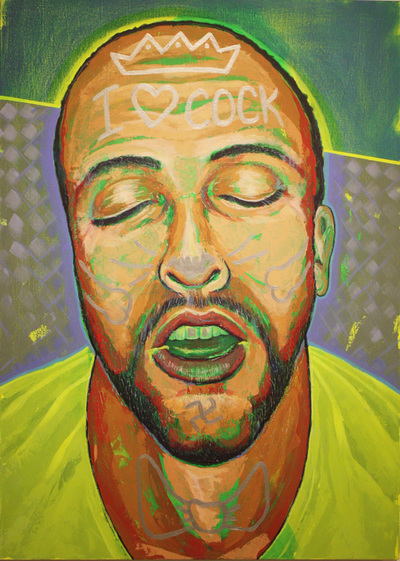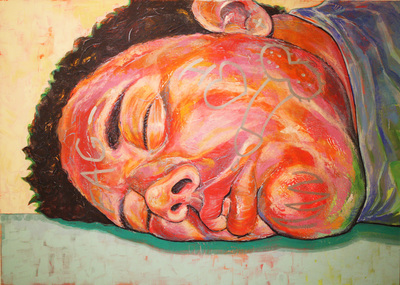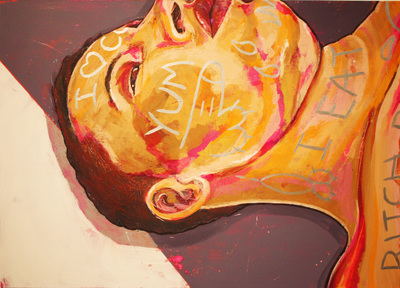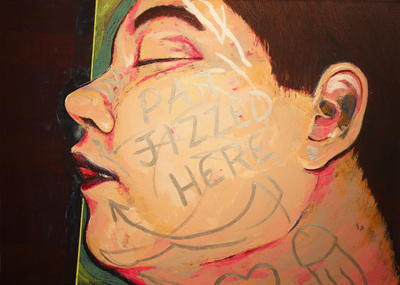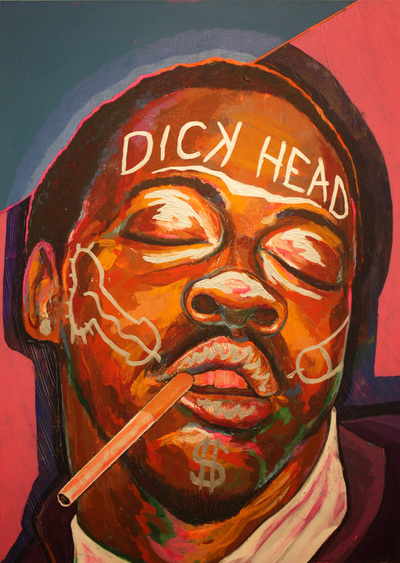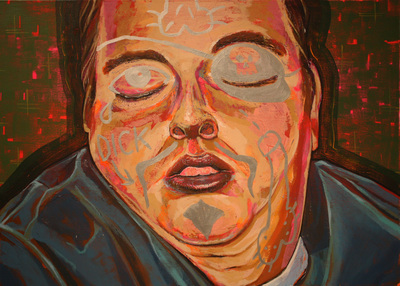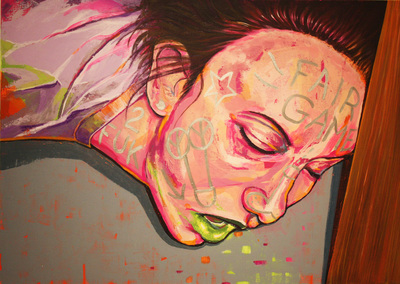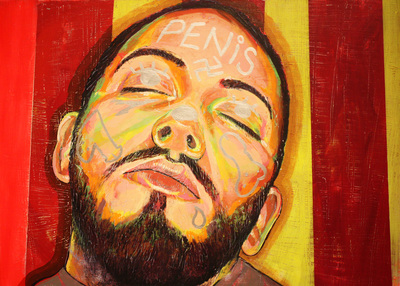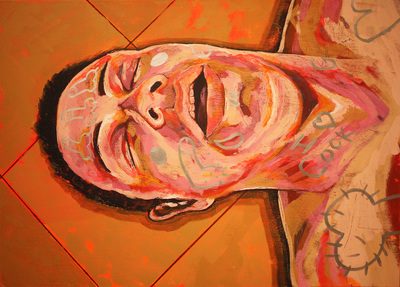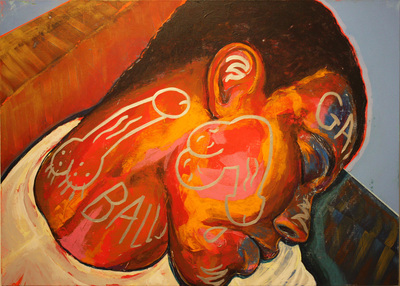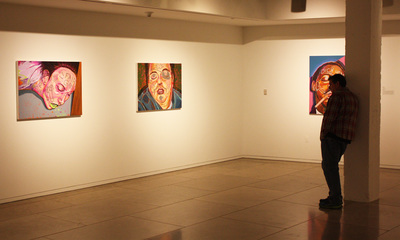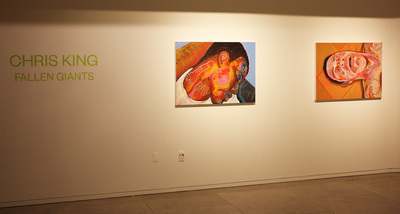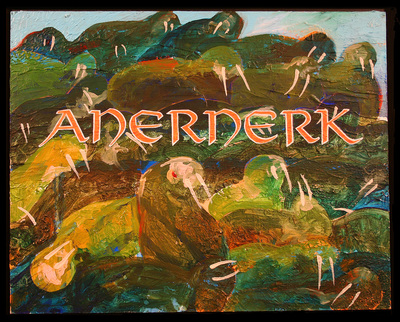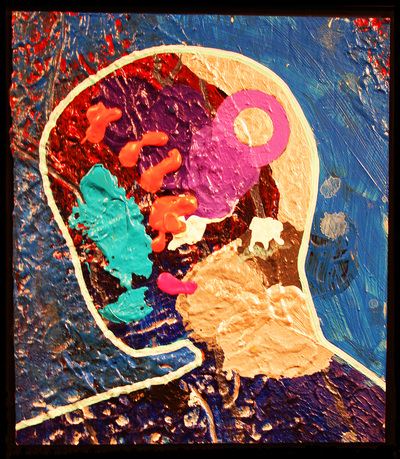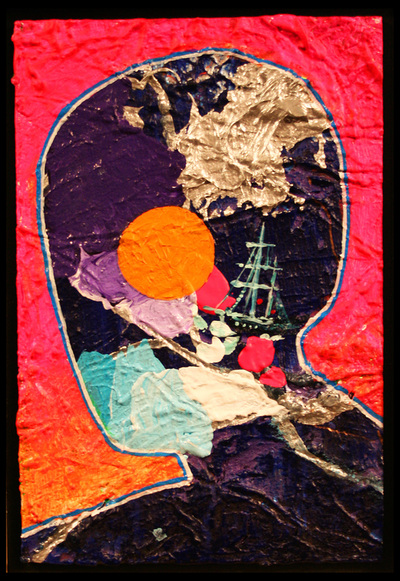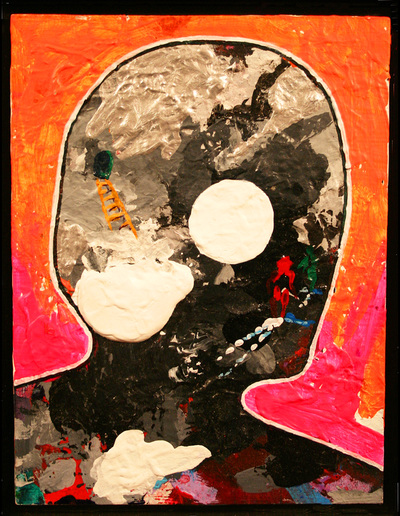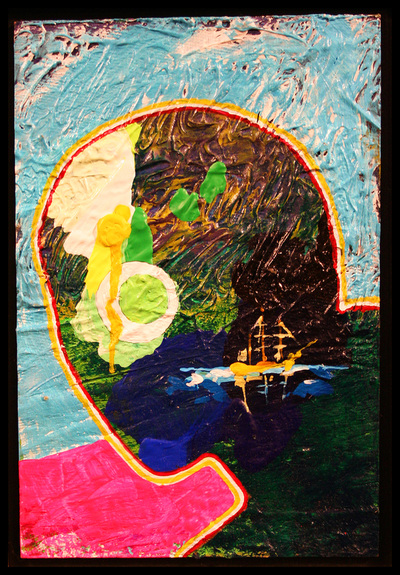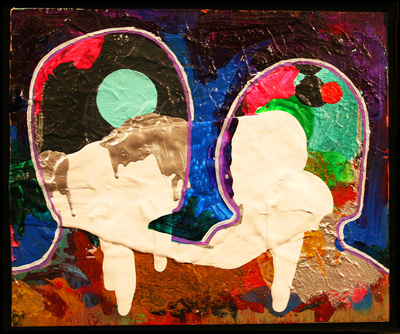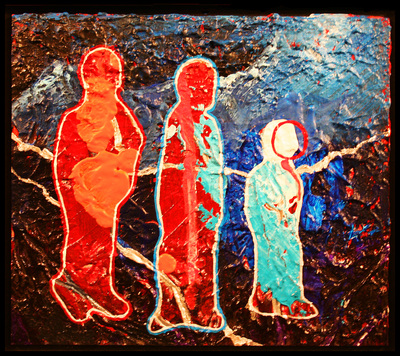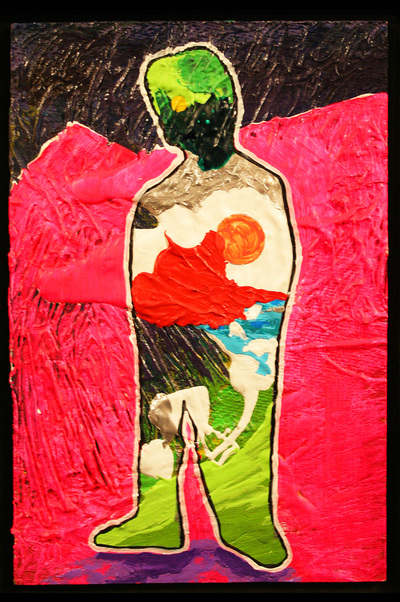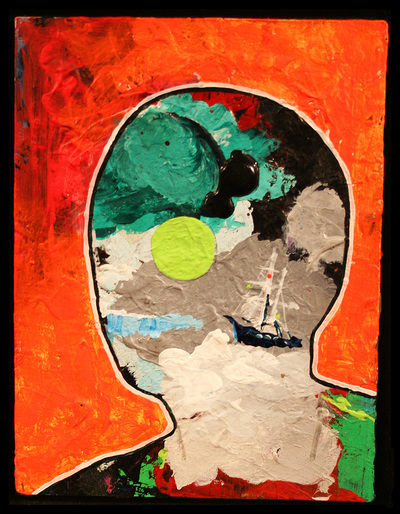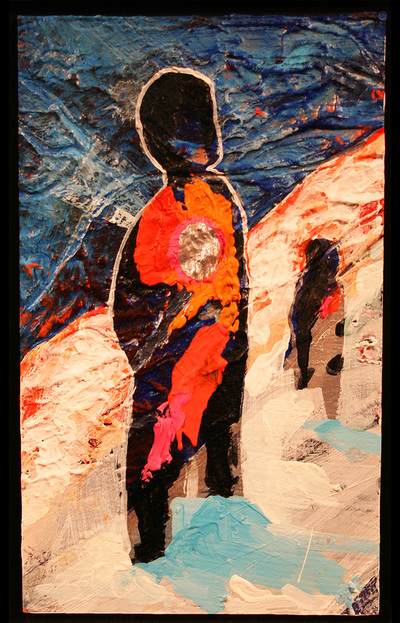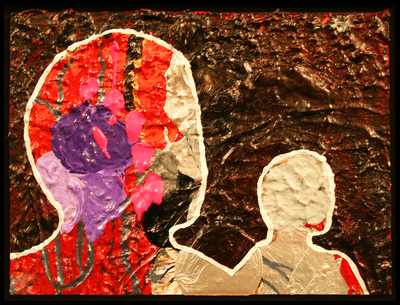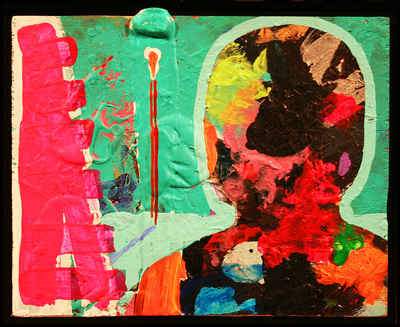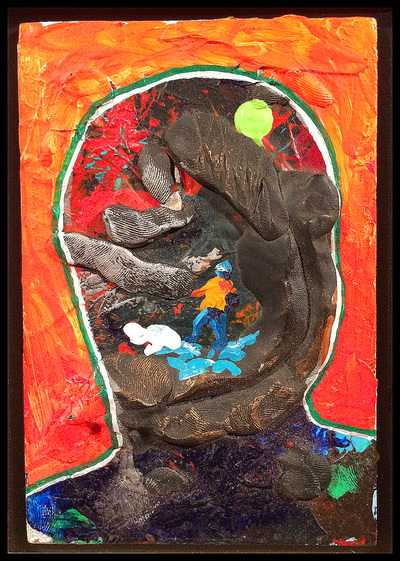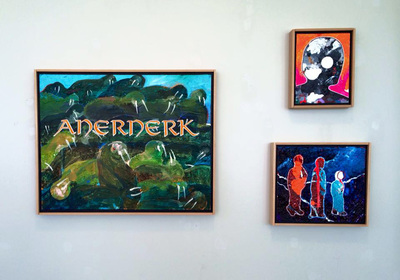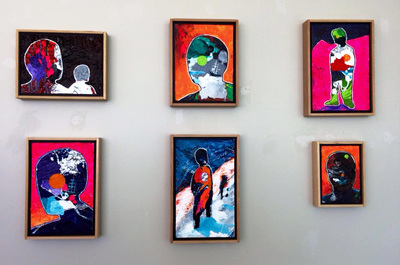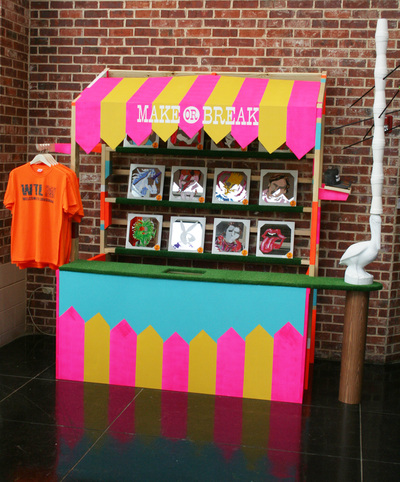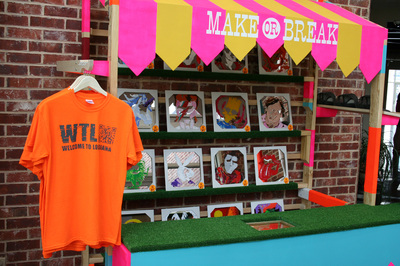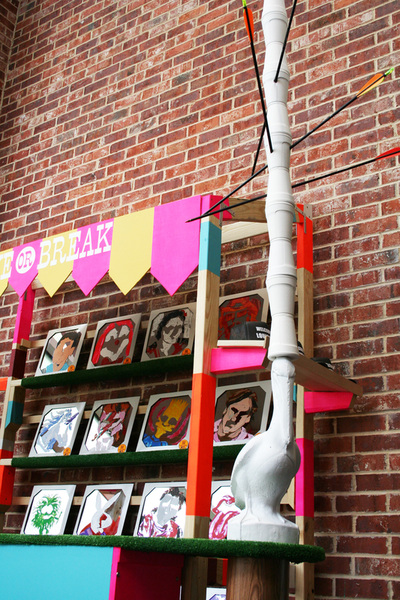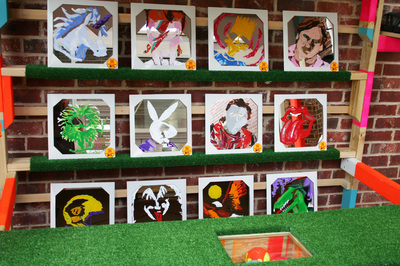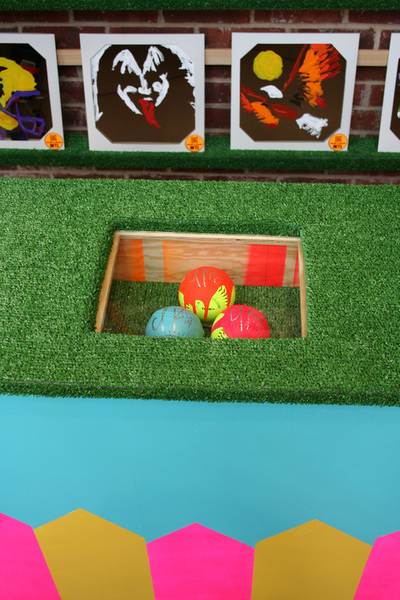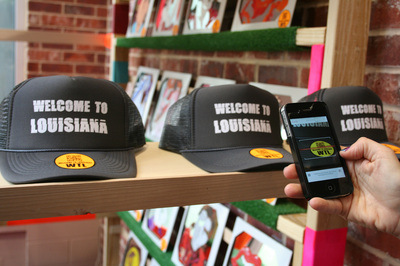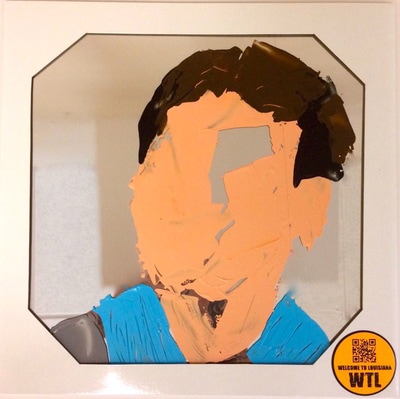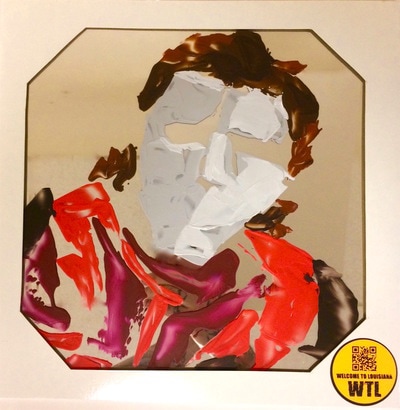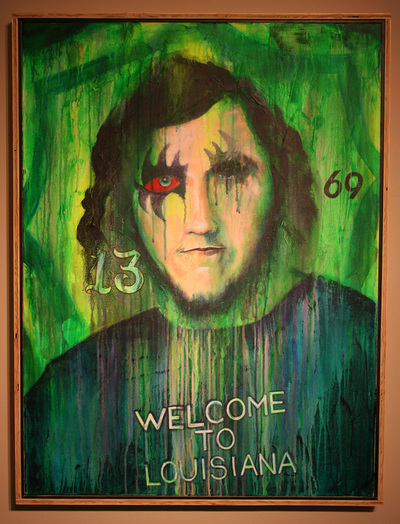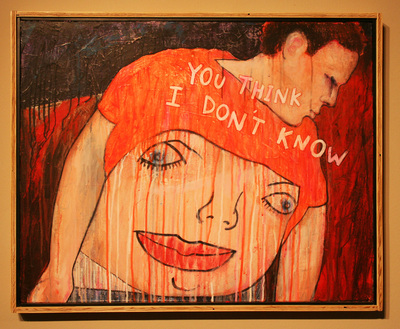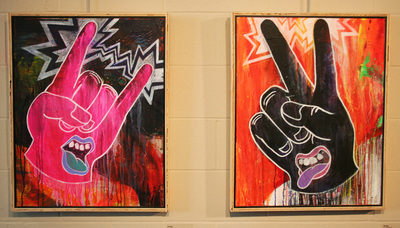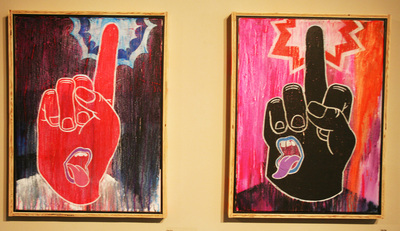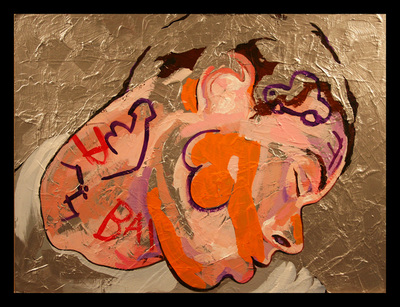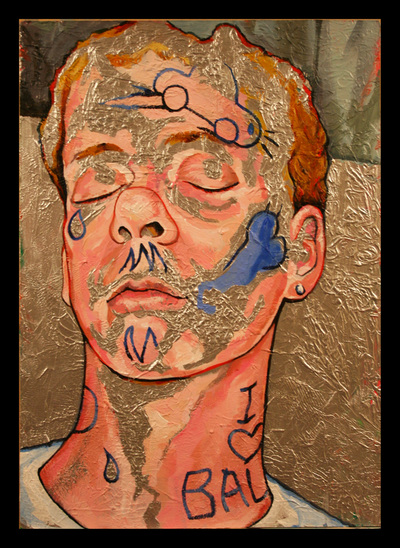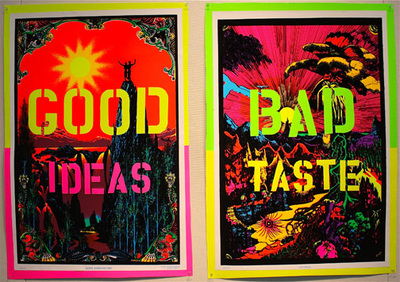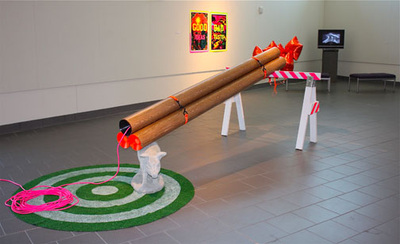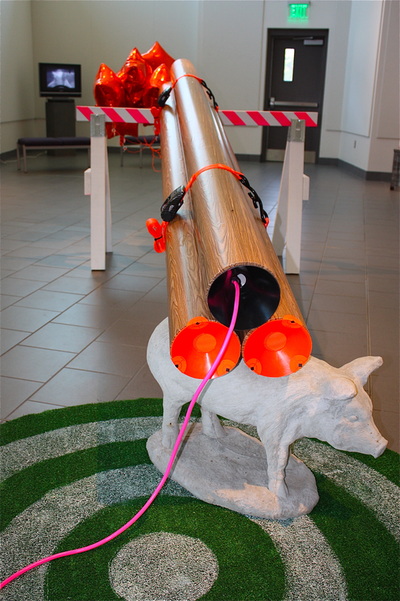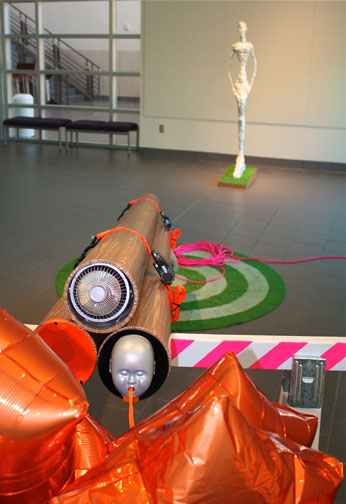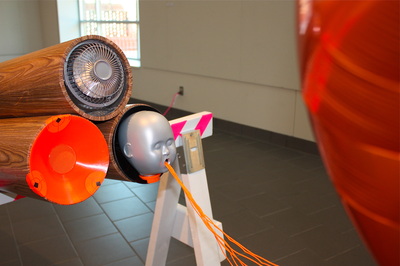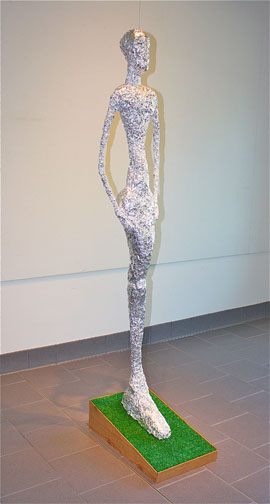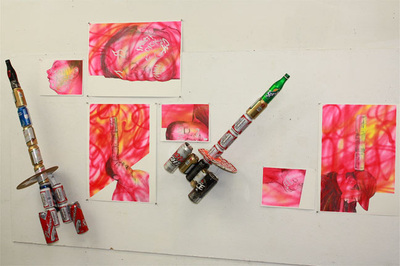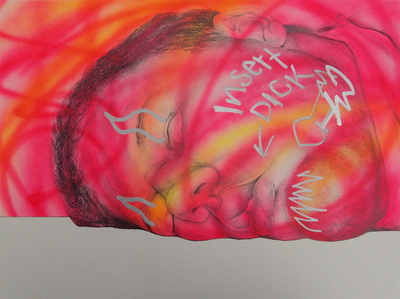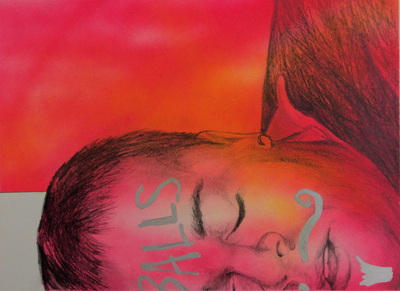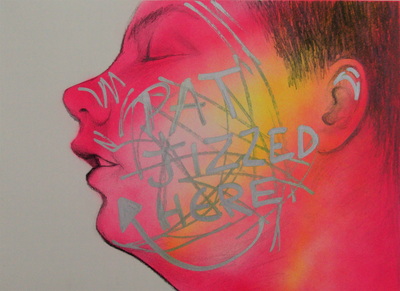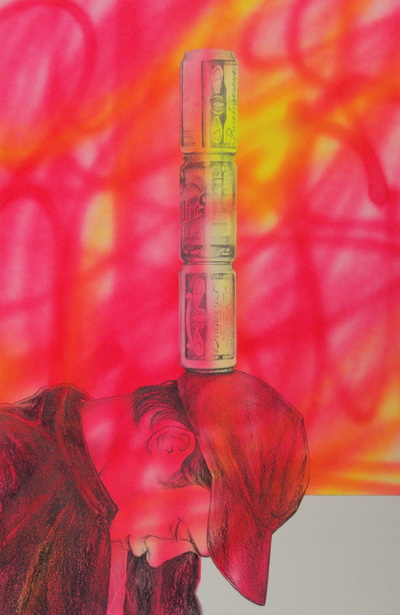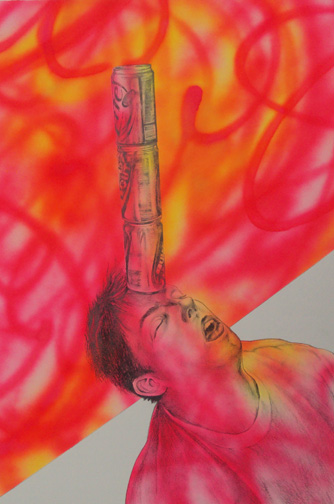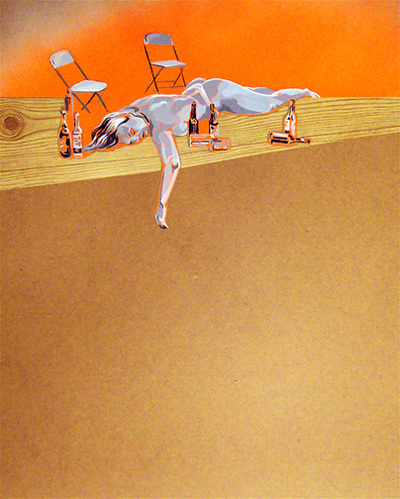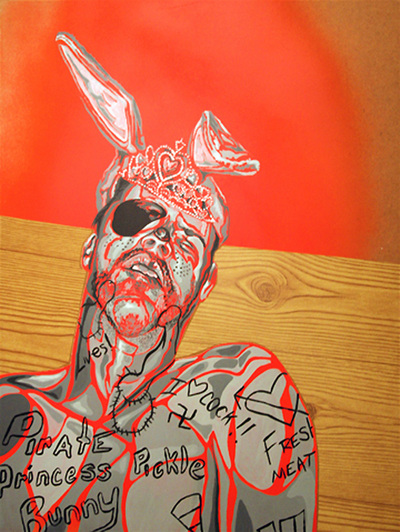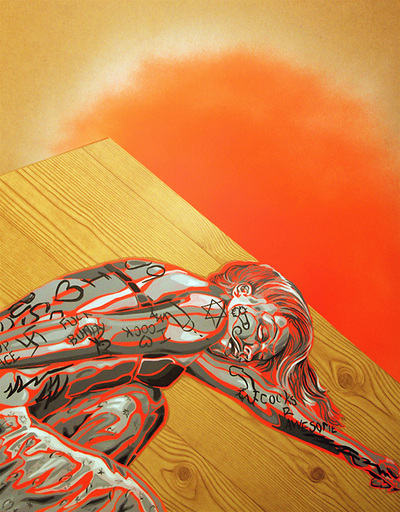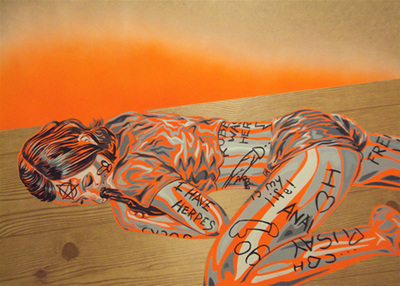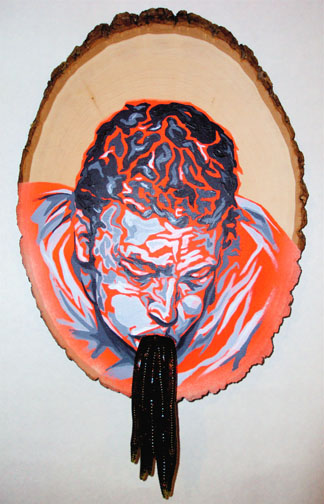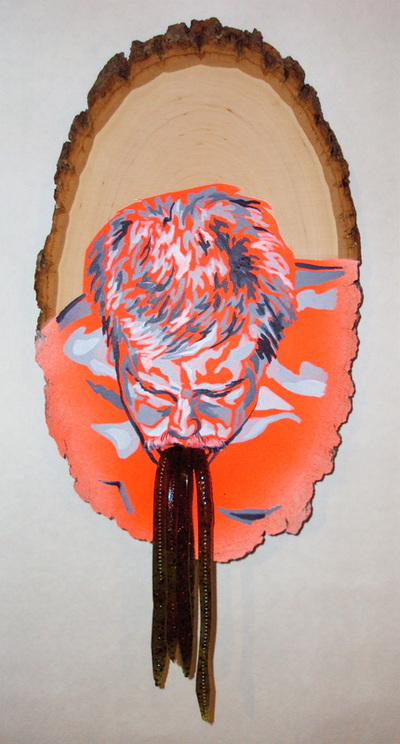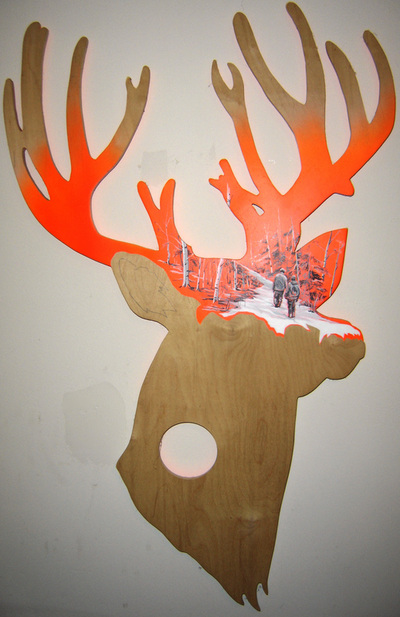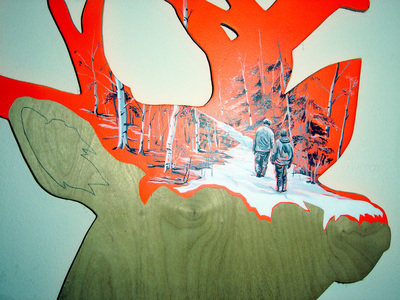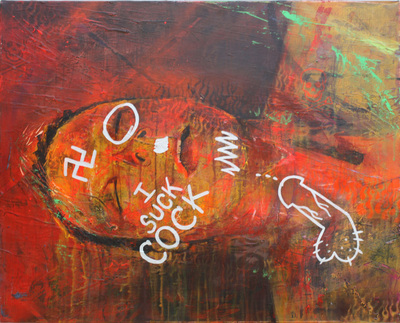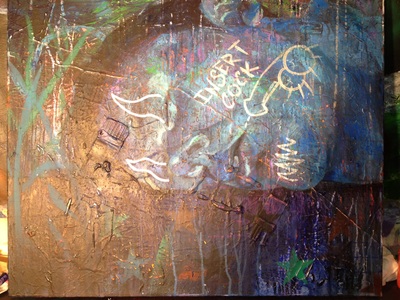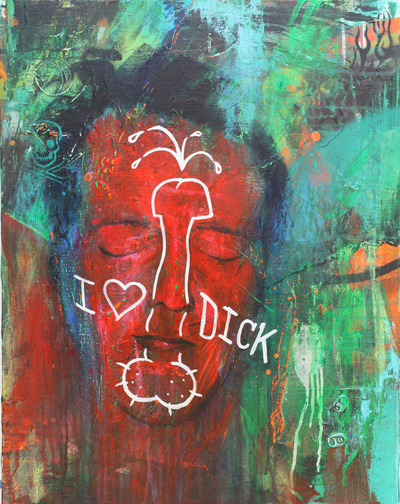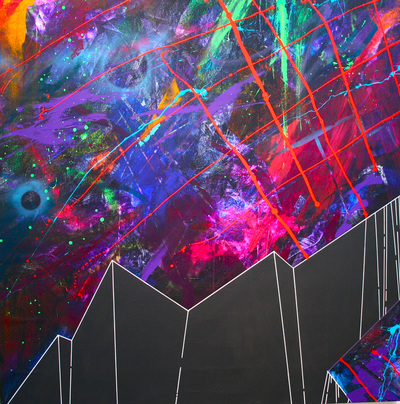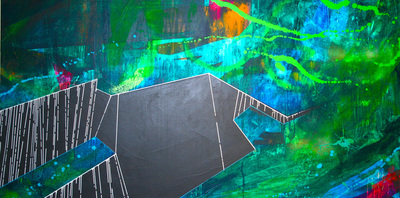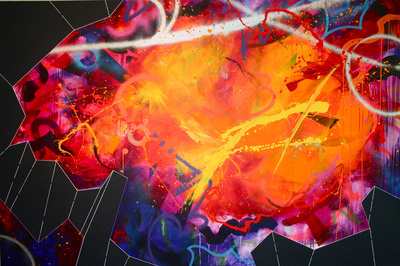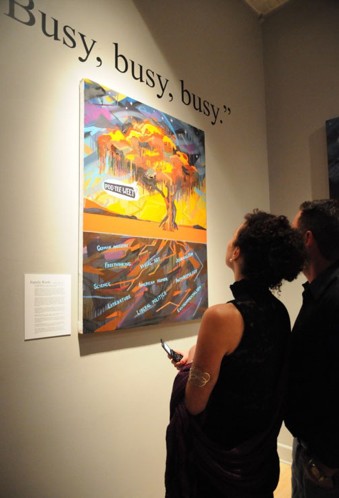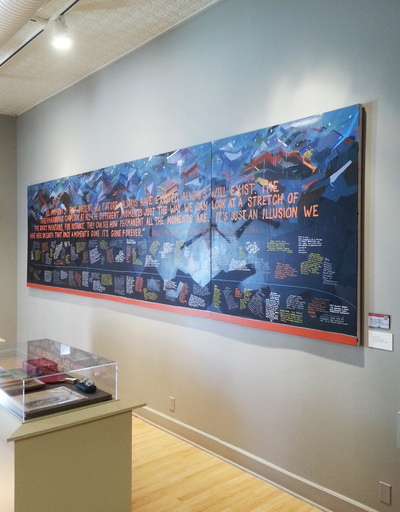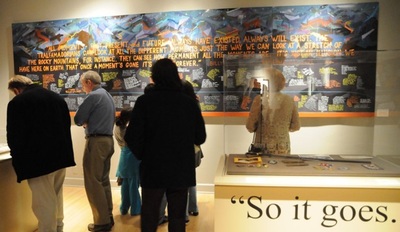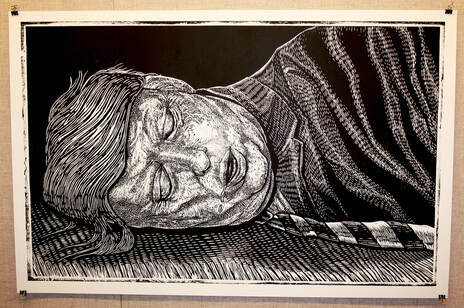 "Down Goes the Demon" 2017, woodcut print on paper (26" x 40")
"Down Goes the Demon" 2017, woodcut print on paper (26" x 40")
Down Goes the Demon (2017)
This woodcut print was created while attending a residency at
Evil Prints in St. Louis, MO. In this piece King retains his interest
in the anxiety he shares with many Americans during the first
year of the Trump Administration. As Trump threatens to
"totally destroy" North Korea, calling Kim Jong Un a "Rocket
Man", North Korea prepares to test launch another nuclear
weapon, and intensity grows world wide. King understands
that while some may find humor in his representation of Trump
unconscious on the floor, others may see this piece as a
sympathetic or disturbing portrait of our president; one that
references King's previous series of paintings, Fallen Giants,
containing images of passed out party kids. Only this time it's
the leader of the free world who is intoxicated, clueless, and
on the verge of self-destruction.
This woodcut print was created while attending a residency at
Evil Prints in St. Louis, MO. In this piece King retains his interest
in the anxiety he shares with many Americans during the first
year of the Trump Administration. As Trump threatens to
"totally destroy" North Korea, calling Kim Jong Un a "Rocket
Man", North Korea prepares to test launch another nuclear
weapon, and intensity grows world wide. King understands
that while some may find humor in his representation of Trump
unconscious on the floor, others may see this piece as a
sympathetic or disturbing portrait of our president; one that
references King's previous series of paintings, Fallen Giants,
containing images of passed out party kids. Only this time it's
the leader of the free world who is intoxicated, clueless, and
on the verge of self-destruction.
Up All Night (2017)
"As we enter the first year of a new presidency and political tension continues to grow, the themes in my work are evolving. I realize that for a lot of Americans, watching the recent election was like watching a spectator sport, similar to the Super Bowl or a national championship; particularly how the duality of our society is a constant battle between two rival teams of winners and losers. These types of contests are exciting, often fueling an excessive, sometimes dangerous amount of pride among gangs of screaming fans with an extreme desire to be on the “winning” team at any cost. That being said, our collective inflated American ego also does not help us deal very well with disappointment, regardless if it’s at a basketball game or an election and no matter who we’re rooting for, we hate to lose. It’s these feelings of loss, anxiety, and anger that I see in myself and in American culture that has become the focus of
my work." - Chris King
"As we enter the first year of a new presidency and political tension continues to grow, the themes in my work are evolving. I realize that for a lot of Americans, watching the recent election was like watching a spectator sport, similar to the Super Bowl or a national championship; particularly how the duality of our society is a constant battle between two rival teams of winners and losers. These types of contests are exciting, often fueling an excessive, sometimes dangerous amount of pride among gangs of screaming fans with an extreme desire to be on the “winning” team at any cost. That being said, our collective inflated American ego also does not help us deal very well with disappointment, regardless if it’s at a basketball game or an election and no matter who we’re rooting for, we hate to lose. It’s these feelings of loss, anxiety, and anger that I see in myself and in American culture that has become the focus of
my work." - Chris King
Fallen Giants (2016)
"My buddy King and I used to hang out together almost every night after school. We’d race our cars on the boulevard, then pick up a case of Budweiser, drink in the sand pit behind the bowling alley, and talk about our hopes and dreams for the future. King ended up moving a thousand miles away and carved out a nice career for himself as an artist. Art, music, video—he seems to be able to move from one arena to the next, all with his own unique voice, humor, and vision. I’m proud of my buddy King, but it's lonely here in the pit without him." - Anonymous Friend
Anernerk (2015)
Anernerk is a series of paintings created by Chris King during a month long expedition to the North Pole as part of the Arctic Circle Residency Program in 2014. The title, Anernerk comes from the inuit word anerca and is often associated with spirtuality, utopian dreams, and higher forms of abstract thought. In inuit, the word “to make poetry” is the word “to breathe”; both derivatives of anerca – the soul, that which is eternal: the breath of life. King explains, "There was so much to discover as an artist in the rugged beauty of the Arctic. I found that when given the opportunity to be creative in the frozen desolate land of the sea and tundra, the conveniences of the modern world left far behind, life is reduced to the barest essentials, and among those essentials are art and poetry."
Make or Break (2014)
Chris King's 2014 installation, Make or Break, was installed at the main entrance of a Louisiana Arts Center. The piece combines the look of a carnival game with that of a state welcome kiosk. A series of mirror paintings, tee shirts, trucker hats, and other items are displayed within the "kiosk", which also serves as a pedestal for a plaster sculpture that includes a pelican, the Louisiana state bird. Use of a QR Code on these items links the various components in the installation to the Welcome to Louisiana (WTL) website, which he also created. There is a theme of miscommunication throughout the WTL Project, which is represented by scrambling data to create a glitch aesthetic on the website. The construction/deconstruction glitch style also references a political tension that exists in the world today. A climate caused by miscommunication and misunderstanding, leading to many of the world’s problems, and many people's personal problems as well.
Make or Break (2014)
Chris King's 2014 installation, Make or Break, was installed at the main entrance of a Louisiana Arts Center. The piece combines the look of a carnival game with that of a state welcome kiosk. A series of mirror paintings, tee shirts, trucker hats, and other items are displayed within the "kiosk", which also serves as a pedestal for a plaster sculpture that includes a pelican, the Louisiana state bird. Use of a QR Code on these items links the various components in the installation to the Welcome to Louisiana (WTL) website, which he also created. There is a theme of miscommunication throughout the WTL Project, which is represented by scrambling data to create a glitch aesthetic on the website. The construction/deconstruction glitch style also references a political tension that exists in the world today. A climate caused by miscommunication and misunderstanding, leading to many of the world’s problems, and many people's personal problems as well.
Culture Shock (2014 - 10)
Following his move from Los Angeles to rural Louisiana in 2008, King became highly influenced by his new surroundings. Much of his work through 2014 was inspired by the displacement he felt living and working in the deep south for the first time. As a teaching artist, he grew more aware of the struggling education system and limited career opportunities in the area. Images of passed out college students and drunk oil rig workers began to surface in his drawings and paintings. While evidence of, logging, hunting, fishing, and agricultural industries of Northwest Louisiana were used as sculptural elements in various installation projects.
Culture Shock (2014 - 10)
Following his move from Los Angeles to rural Louisiana in 2008, King became highly influenced by his new surroundings. Much of his work through 2014 was inspired by the displacement he felt living and working in the deep south for the first time. As a teaching artist, he grew more aware of the struggling education system and limited career opportunities in the area. Images of passed out college students and drunk oil rig workers began to surface in his drawings and paintings. While evidence of, logging, hunting, fishing, and agricultural industries of Northwest Louisiana were used as sculptural elements in various installation projects.
